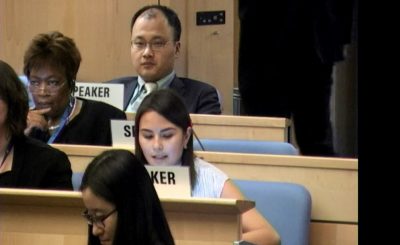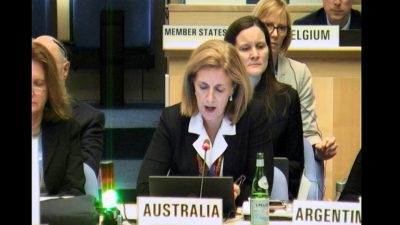Join a powerful, unprecedented alliance for better eye health for all.
Join IAPB-
Choose an alternate language here
IAPB, the peak body for the global eye care sector, welcomes the approval of a World Health Assembly resolution on eye health in the year 2020.
The World Health Organization (WHO) Executive Board approved a resolution on ‘integrated people centred eye care’ in an effort to tackle the rising numbers of people living with vision impairment and blindness.
Peter Holland, Chief Executive of the International Agency for the Prevention of Blindness (IAPB), the peak body for eye health organisations worldwide, said “these predictions are not inevitable. Simple and cost-effective interventions are available to reverse the rapid growth of the problem. As the WHO recommends, it is therefore essential that governments include eye care in their national health plans and essential packages of care”.
The resolution gives effect to the World Health Organization’s first ‘World Report on Vision’ which was launched by the WHO Director-General, Dr Tedros Adhanom Ghebreyesus in October last year. The report found that more than 1 billion people worldwide are living with vision impairment simply because they cannot access the care they need for conditions like short and far sightedness, glaucoma and cataract. This is particularly concentrated in low and middle income countries, where the unmet need is estimated to be four times than in high income countries. The report recommends integrating and scaling up a ‘people-centred approach’ to eye care, as part of all countries’ journeys towards Universal Health Coverage.
2020 is a pivotal year for global eye health. It marks the conclusion of VISION 2020, which has guided action over the past two decades, and the WHO’s ‘Universal Eye Health Global Action Plan 2014-2019’.

IAPB’s Head of Policy and Advocacy, Jessica Crofts-Lawrence, addressed the WHO Executive Board, stating “we are now entering a decade of accelerated action on the Sustainable Development Goals and Universal Health Coverage, neither of which can be achieved without eye care”. She told us “this is not just a health issue. Vision needs to be placed alongside other development priorities. Improving eye health helps reduce poverty, and deliver quality inclusive education, decent work and gender equality”.
The resolution was led by Australia and Indonesia and had strong country support, including by Burkina Faso, Eswatini, Ethiopia, Kenya, Israel, Malaysia, Myanmar, Singapore, South Africa, Thailand, Bangladesh, Chile, Peru, Montenegro, Poland, Turkey, the United Kingdom, the United States and the European Union.
During the discussion, Member States recognised the urgency in addressing this issue, noting that the growing prevalence would pose a significant cost to national health systems. Many Member States took the opportunity to highlight both the challenges as well as their efforts in tackling this issue at a national level. It was agreed that the resolution should serve as a catalyst for further action by the WHO and Member States.
The resolution will now be put before the 73rd World Health Assembly in May for adoption.
“We commend the WHO and members of the Executive Board for their leadership in addressing this issue” said Peter Holland. “This is a major step forward, but this is only part of the way. We need leadership from all 194 Member States to endorse the resolution at the 73rd World Health Assembly in May – committing the words into action as a global agreement”.

Brandon Ah Tong, Head of Public Policy and Advocacy at The Fred Hollows Foundation, “This resolution shine’s a light on the urgent need to address barriers in access to eye care, as we know those often left behind are the poorest and most disadvantaged in our communities – women and girls, people with disability and people living in hard to reach places. It will require all countries to strengthen eye care in their health systems, enable the development of feasible global targets, and provide the WHO with a mandate to develop additional country guidance and approaches on eye care, so no one is left behind.”
IAPB would like to acknowledge the support of its membership in driving this resolution, especially CBM, Light For The World, Sightsavers and The Fred Hollows Foundation.
Hero image: Indonesian representative at the 146th World Health Assembly speaking in support of the resolution.